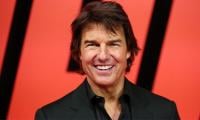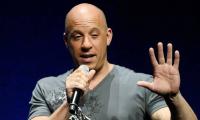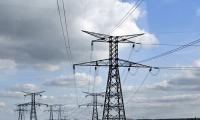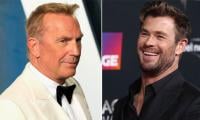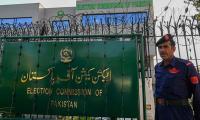The first tennis major is upon us with the Australian Open set to kick off on Monday. The tournament, in many ways, would give us a glimpse of where men’s tennis is headed. While the Big Three – Novak Djokovic, Rafael Nadal and Roger Federer – are expected to vie for the title, in broader terms it could be a case of the golden, and now older, generation being pitted against the young pretenders.
How the 2018 season ended – with Alexander Zverev winning the World Tour Finals and Karen Khachanov bagging the ATP Masters 1000 title in Paris – has added further impetus to the Next Gen’s claims. These triumphs were in contrast to what had transpired over the previous couple of years, with Federer, Nadal and Djokovic sharing the eight majors contested in 2017 and 2018 – and indeed what has unraveled across the past decade and a half of unparalleled collective dominance of the game’s most illustrious troika.
The draw that was made on Thursday has certainly added to the ‘old vs young’ billing. What remains to be seen is if a first time major winner is in the offing, or if the Big Three will make it nine on the trot.
Before we dissect those two groups, let’s start with a look at two members of the Big Three’s generation who have been the only ones to win anything meaningful in their era. Andy Murray and Stan Wawrinka enter the Australian Open unseeded with contrasting injuries having resulted in their layoffs and slumps across the past couple of seasons.
Wawrinka finds himself in fourth seed Zverev’s quarter, while Murray is in third seed Federer’s. Neither of them would be looking that far with Wawrinka drawn against ErnestsGulbis in the first round, with the winner of the match between Milos Raonic and the dangerously unseeded Nick Kyrgios awaiting in the second. For Murray, the opening round against Bautista Agut would be a real test.
Sixth seed Marin Cilic, one of only four men to have won a major outside the Big Three in the past 14 years, is also in Federer’s quarter. Last year’s runner-up would be happy with his path till the fourth round, where he could he could play Khachanov. Along with Khachanov, Stafanos Tsitsipas, the Rogers Cup finalist last year is in the same quarter. The Greek is seeded to meet Federer in what could be a mouthwatering clash between the generations in the fourth round.
Federer opens with a clash against Dennis Istomin, and could face Gael Monfils in the third round. If this quarter goes as per seeds it would result in a Federer-Cilic quarter, but Khachanov and Tsitsipas might have a say in that.
This quarter is in the same half as that of second seed Nadal, which means a Fedal semifinal could be in store if both the legends make it to the final four. The Spaniard would be tested in a potential third round clash with the young Aussie Alex de Minaur, with a fourth round clash with either Kyle Edmund or Diego Schwatzman likely.
Nadal’s quarter has the fifth seeded Wimbledon finalist Kevin Anderson, John Isner and Grigor Dimitrov. The Spaniard should be pretty happy with his draw, and health permitting would be the favourite to make it to the semifinals. However, Anderson would like to go one better Down Under having made the finals at Wimbledon and the US Open. Alex de Minaur is perfectly capable of springing a surprise or two.
The Next Gen is spearheaded in the top half by third seed Zverev, who also has Hyeon Chung, Kyrgios and Borna Coric in his quarter. If the quarter were to go as per seeding, Zverev would play Dominic Thiem in the last eight, which could be a matchup between the two players who’ve come the closest to overcoming the dominance of their more illustrious seniors.
However, while Thiem has a French Open final under the belt, Zverev only has made a single major quarterfinal. But if the German can overcome his minor injury concerns, he is definitely one of the contenders for the Australian Open.
In the top quarter, World No 1 Novak Djokovic could face early testers in the shape of Jo-Wilfried Tsonga in the second round and another potential clash of the generations with Denis Shapovalov in the third round. His fourth round could be with another Next Gen star with Daniil Medvedev seeded to play the Serb in the Round of 16.
Kei Nishikori is seeded to face Djokovic in the quarters, but will have to navigate his way through a section of the draw that includes Fabio Fognini and Carreno Busta. Nishikori has a relatively easier section and should set up the quarterfinal with the top seed, who should be able to overcome the Next Gen challenge in the initial rounds.
If Djokovic takes on the younger stars in his opening few rounds, it could be the microcosm for the tournament in itself. While the Serb is the favourite to win the Australian Open, there’s more than a chance that his likely challenger mightn’t be his two greatest rivals Nadal and Federer, but a Next Gen star.
Federer might be the two time defending champion in Melbourne, but it’s evident that age has gradually crept up and for the first time he has actually hinted at retirement. Nadal, meanwhile, hasn’t played since September and it’s increasingly obvious that the hard courts are taking their toll on his body with the Spaniard being forced to retire in both the hard court majors last year.
Indeed, Nadal has proven his post-injury doubters wrong on countless occasions, while Federer has defied his age for the past couple of years, but maybe the challenge of the younger lot might be too much for Fedal who’ve had a pretty hectic – albeit trophy laden – couple of seasons.
And so, it boils down to Djokovic vs the Next Gen to win the first major of the year. The latter would be led by Zverev, but also prominent features the slightly older Thiem, along with Khachanov, Coric, Tsitsipas, Shapovalov – among others.
The Australian Open winner would not only set the tone for 2019, the result could also formally announce a change of guard. On the flipside, Djokovic can make it three successive Grand Slam titles and reaffirm his dominance on the game.
